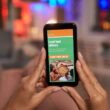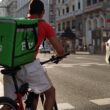Though there are some similarities in the school curriculum, 2nd-grade math skills are more complex than 1st-grade ones. Second-grade students have to master necessary maths topics to progress in their studies, which will help them get to the next grade and come in handy in real-life scenarios.
To help your child improve and gain new skills in the second grade, you need printable math worksheets such as teaching aids, new lesson strategies, and math manipulatives. But you can’t get proper tools without knowing the skills you want to help your kid build. So, in this article, we will look at the skills your child will learn in 2nd grade.
Counting within 1000
In first grade, your kids learn how to count from 1 to 10 and then to 100 as they progress in learning.
Your child will now move from 1 to 100 to 1 to 1000. Remember that this is not an easy feat to reach, so it is best to enrol a kid in online maths classes that will help them learn to count these large numbers.
Understanding place value in three-digit numbers
After learning to count to 1000, the next thing that would cross a child’s mind is why specific numbers sound the way they do. For example, your child could wonder why they have to say one hundred and eleven for 111 instead of just one one one.
Understanding place value in three-digit numbers will teach your students or kids why they must pronounce the numbers a certain way. Brighter tutors will explain this concept using fun games for 2nd graders. You can also use maths songs and reenactments to drive the point home.
Comparing three-digit numbers
The use of greater than (>), lesser than(<), and equal to (=) comes into play when kids begin to learn how to compare three-digit numbers. They understand why one number is greater than the other and vice versa. The tricky part comes from the number of digits they have to compare.

Note that this is not an addition or subtraction exercise. Instead, your child should focus on understanding number progression and the numbers that come before others. For example, they would put three-digit numbers next to other three-digit numbers and compare them to understand the value of each one.
Adding and subtracting within 1000
At this point, your second grader should learn how to add and subtract large numbers within 1000. You can also incorporate word problems into their curriculum to teach the kids to think critically and replicate maths problems in real-life conversations.
For example, you can ask them: Freddy has 300 candies for Halloween, ten kids visit him, and he gives them fifteen candies each; how many sweets does Freddy have left?
The students can break apart this word problem, take out the numbers and solve them, or solve the whole problem using the second common core math principle.
Measuring
Measurement is an easy skill to learn and one that is useful almost daily. In second grade, your child will learn how to measure things to understand why some things are more significant than others and how to identify these measurements.
When you hear your child saying ‘This is bigger or ‘this is smaller’ or using other terms of measurement, then the lessons on size have begun in class. You now have to help them understand their studies better by explaining the measurement units and providing examples using real-world objects.
Telling time to the nearest five minutes
Time is a complicated concept; however, it is an essential topic that kids must learn in the second grade. It is almost impossible to teach kids about all the elements of time at such a young age. Because of the topic’s nature, teachers must take the lessons bit by bit.
However, what we can do is incorporate skip counting into time lessons. Using the skip counting of 5, the kids can now learn to say one o’clock, five minutes after one, ten minutes after one, fifteen minutes after one…, and so on. You can also teach them the difference between AM and PM while at it. If your child shows particular skill or interest in time, you could take their learning one step further and introduce the concept of military time to them, perhaps with resources like this chart for military time. If they pick it up, you can ask them to tell you the time in both the 12-hour format and in military time during your practice sessions.
Solving word problems involving money
Kids already learn the basics of money in first grade, so in second grade, they face money-related word problems. The goal is to ensure that they understand how people use, exchange, and calculate the money in real life. Practising word problems also improves their basic calculation (addition, subtraction, division, and multiplication) skills.
A money word problem can go thus: I gave Karen $1 to buy four candies costing 29 cents; how much change do I have left? In figuring out the answer to that question, kids will learn the value of each denomination. Now, as a parent, you can help by introducing different coins and denominations and pretending to sell items so that your child learns the value of each currency or bill.

Understanding picture and bar graphs
Maths for second graders begins to hit a new complexity as kids reach the end of the curriculum. Teachers will introduce the concept of pictures and bar graphs at that stage. This lesson walks the students through visual comparisons and data representation.
Teaching pictures and bar graphs is not the easiest because kids are easily distracted and could be so fixated on the images that they miss the lesson. However, this maths concept prepares them for studying more complex topics in the future and opens their minds to the endless possibilities that maths could offer.
Conclusion
Second grade is an exciting stage for kids because they begin to take some form of educational responsibility, seeing as they have moved up a level. Parents need to know the required skills for understanding second-grade maths lessons, register kids for online maths classes, and help them build those skills. Then, they can look at the ones discussed in this paper and practice some with their kids at home.




























































